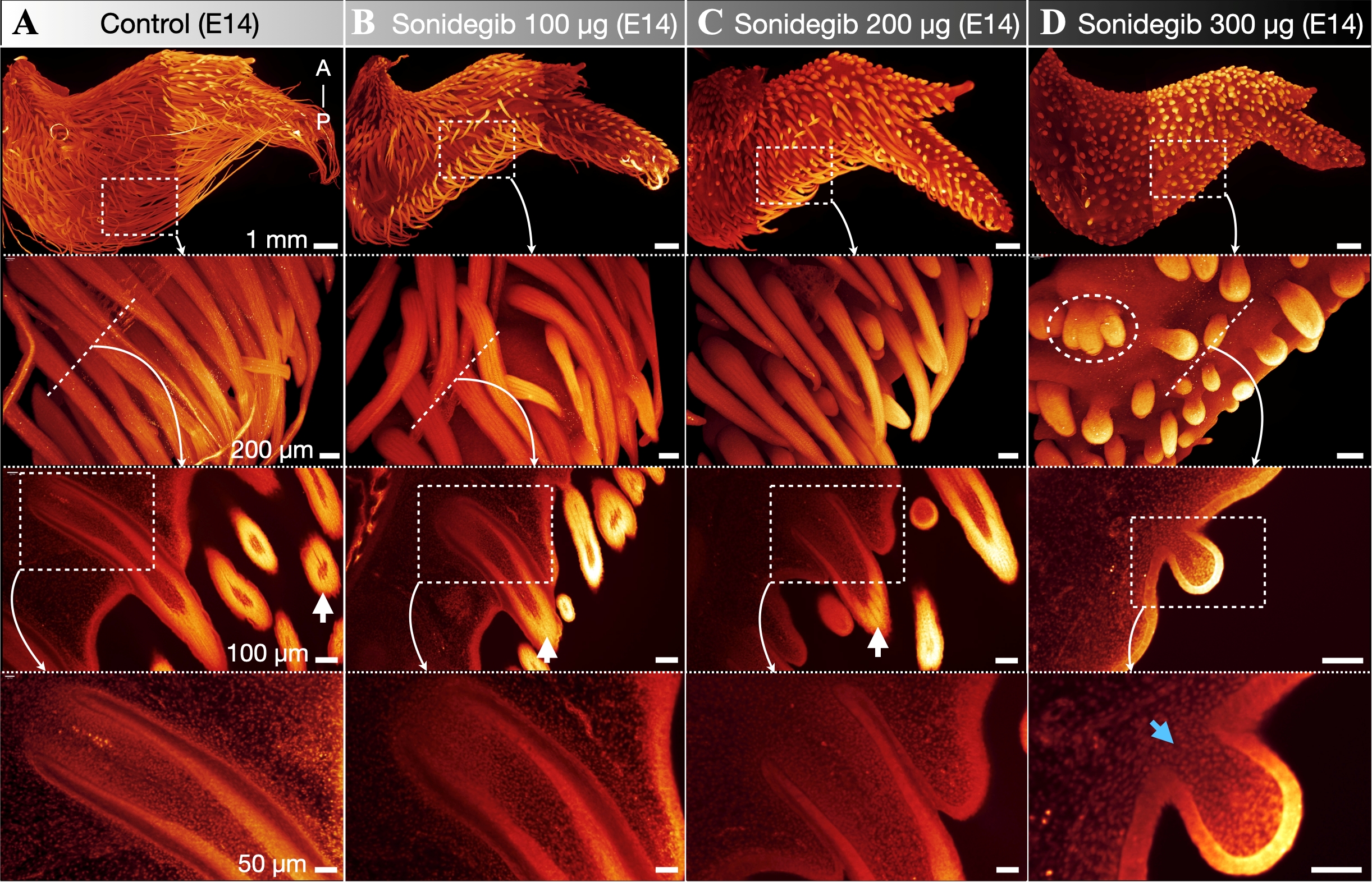What do you get when you combine chicken embryos, a gene named after a video game character, and a couple of scientists? A brand-new study that’s confirmed a key element in feather evolution, after it temporarily caused developing chicks to have primitive feathers resembling those thought to have been found in some dinosaurs.
ADVERTISEMENT
The study saw geneticists Professor Michel Milinkovitch and postdoctoral researcher Rory Cooper targeting the Sonic Hedgehog (Shh) pathway, a series of molecular signals that play a critical role in embryonic development, including feathers in chickens. The pathway takes its name from its major player, Sonic hedgehog protein (SHH), which itself is named after the infamously speedy blue critter.
Milinkovitch and Cooper had previously studied what happened when this pathway was stimulated in chickens, the result being embryos that developed feathered, rather than the usual scaly feet. But what happens when the Shh pathway is blocked instead? That’s what the research duo sought to find out in this new study.
This involved injecting chicken embryos with a molecule that inhibits the Shh pathway – and by day nine of embryonic development, something unusual was beginning to occur. Instead of the formation of the usual barbed, complex feather buds, the embryos were showing signs of developing something like proto-feathers.

The control images show normal feather development; on the right, chicks treated with progressively higher amounts of the Shh pathway blocker show feather buds that instead resemble proto-feathers.
These are simple, tube-like structures that are thought to have been present in certain dinosaur species during the Early Triassic, gradually evolving into the more complex feathers that we see in birds today. The appearance of similar structures after altering the Shh pathway suggests that it’s played a key role in this evolutionary process.
However, their appearance was only temporary.
From two weeks onwards, feather development in the embryos partially returned to normal. The chicks with the altered pathway had some patches of naked skin when they hatched, but “remarkably, these follicles [were] subsequently reactivated by seven weeks post-hatching,” the researchers wrote, and they eventually wound up with normal feathers.
ADVERTISEMENT
‘‘Our experiments show that while a transient disturbance in the development of foot scales can permanently turn them into feathers, it is much harder to permanently disrupt feather development itself,’’ said Milinkovitch in a statement.
In other words, no dino-chicken feather hybrids any time soon – but what it does illustrate is the importance of the Shh pathway in feather development, and how it appears to have evolved extreme resilience too.
‘‘Clearly, over the course of evolution, the network of interacting genes has become extremely robust, ensuring the proper development of feathers even under substantial genetic or environmental perturbations,’’ added Milinkovitch. ‘‘The big challenge now is to understand how genetic interactions evolve to allow for the emergence of morphological novelties such as proto-feathers.’’
The study is published in PLOS Biology.
Source Link: Scientists Disrupted A Key Gene – And It Made Chicken Feathers More Dinosaur-Like